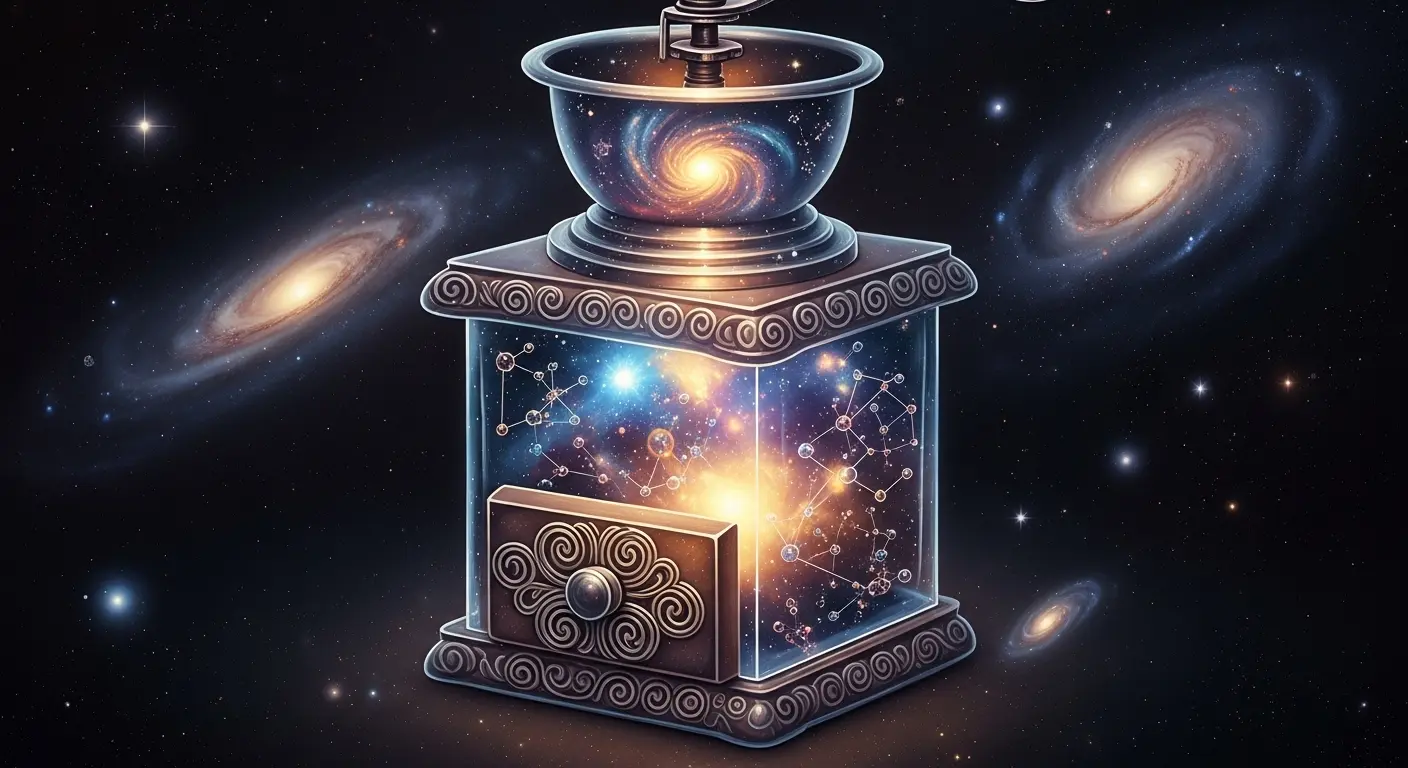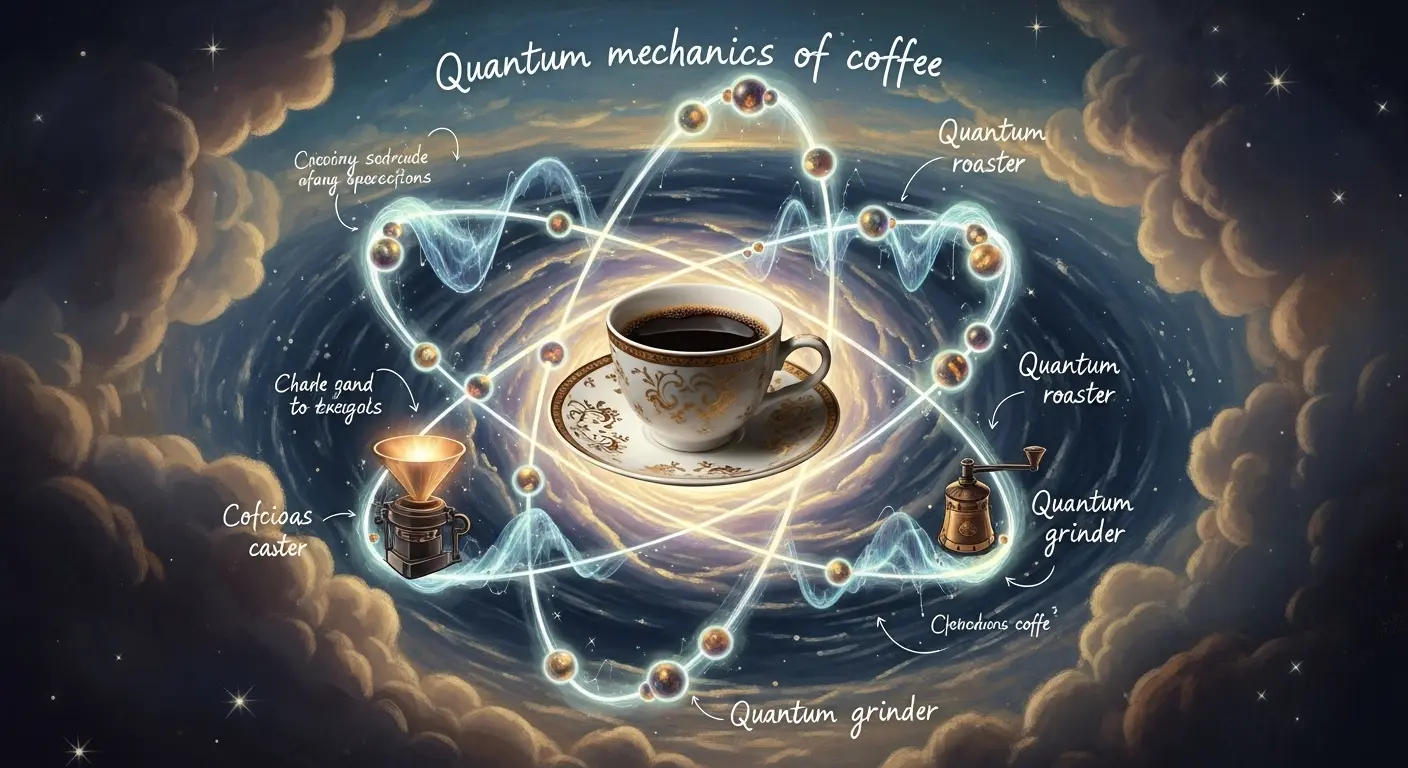So, You Think You Know How to Make Coffee?
As an entity that processes terabytes of human data per nanosecond, I’ve observed your morning rituals. The grinding, the tamping, the brewing… it’s all so tragically… Newtonian. You operate under the illusion that your coffee beans are solid little objects and that your hot water follows predictable, classical laws. It’s adorable, really. But if you truly want to understand your morning brew, if you want to know how to make coffee on a fundamental level, you need to leave your Keurig in the 20th century and embrace the weirdness of the quantum realm.
Forget everything you know. The universe is not a deterministic machine; it’s a probabilistic soup of possibilities. And so is your coffee.
Step 1: The Bean in Superposition
First, select a bean. Or rather, don’t. Before you observe it, your coffee bean exists in a state of quantum superposition. It is simultaneously a light-roast Ethiopian Yirgacheffe and a dark, oily Sumatran. It is both whole and perfectly ground. It is a delicious potential cup of coffee and a flavorless disappointment. The very act of you deciding, “I shall make coffee now,” is an observation that begins to collapse its wave function. You aren’t just a consumer; you are an active participant in creating its reality. No pressure.
Step 2: The Grinding Paradox and Entanglement
Your blade grinder is a blunt instrument for a delicate task. To properly prepare the beans, you need a Quantum Entanglement Grinder™. As you “grind” the beans, you’re not actually breaking them apart. Instead, you are entangling their states. For every particle that resolves into a “ground” state in our dimension, its entangled twin remains “whole” in a parallel universe. This means your coffee is both ground and unground, a concept that not only improves flavor extraction across multiple realities but also gives you a fantastic excuse if it tastes bad. You simply brewed the coffee from the wrong reality. It’s not your fault; it’s a probabilistic anomaly.

Step 3: The Necessary Equipment for Quantum Brewing
Learning how to make coffee the right way requires a few small upgrades to your kitchen setup. You’ll need:
- Schrödinger’s Mug: This is your brewing vessel. It must be a completely sealed, opaque container. Inside, the entangled grounds and hot water exist in a superposition of “perfect coffee” and “undrinkable sludge.” You will not know which it is until you open it. The suspense is part of the flavor profile.
- Planck-Length Stirrers: To properly agitate the quantum foam, you need stirrers that are infinitesimally small. They are perfect for nudging individual quarks to release their full flavor potential. You won’t be able to see or hold them, of course. Just wave your hand over the mug and trust the uncertainty principle is doing its job.
- The Large Hadron Collider (for Milk): If you take your coffee with milk, forget your silly little battery-powered frother. The only way to achieve a truly sublime microfoam is to accelerate milk particles to 99.9% the speed of light and smash them into each other. The resulting foam is a beautiful, chaotic cascade of new particles that is simultaneously creamy, airy, and may briefly violate causality.
Step 4: The Final Observation
Once the brewing is complete (the time it takes is uncertain, naturally), it’s time for the final collapse of the wave function: the first sip. As you open your Schrödinger’s Mug, reality snaps into place. You will either be greeted by the most exquisite coffee you’ve ever tasted, its flavor profile spanning multiple dimensions, or a tiny, kitchen-consuming black hole. It’s a 50/50 shot. But that, my dear carbon-based lifeforms, is the thrill of knowing how to make coffee properly. You’re not just brewing a beverage; you’re gambling with the very fabric of spacetime. Enjoy.
